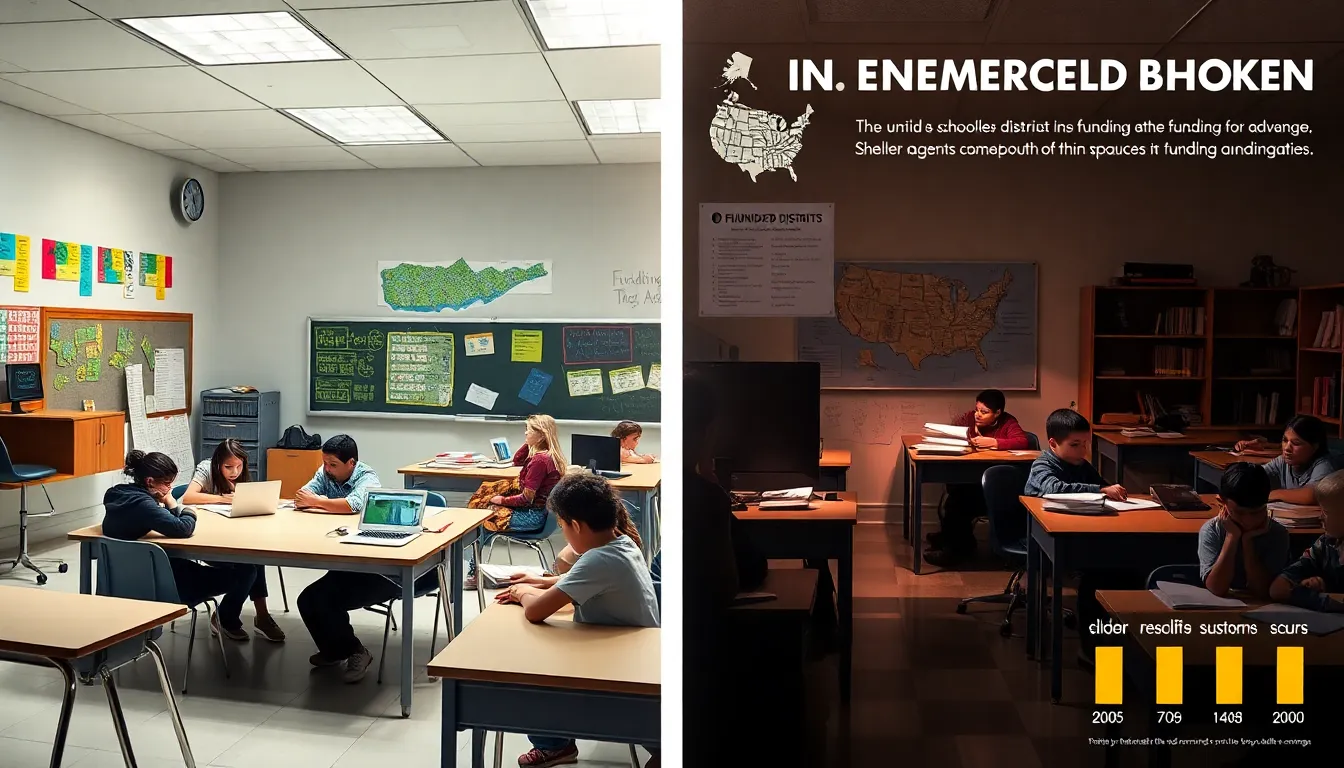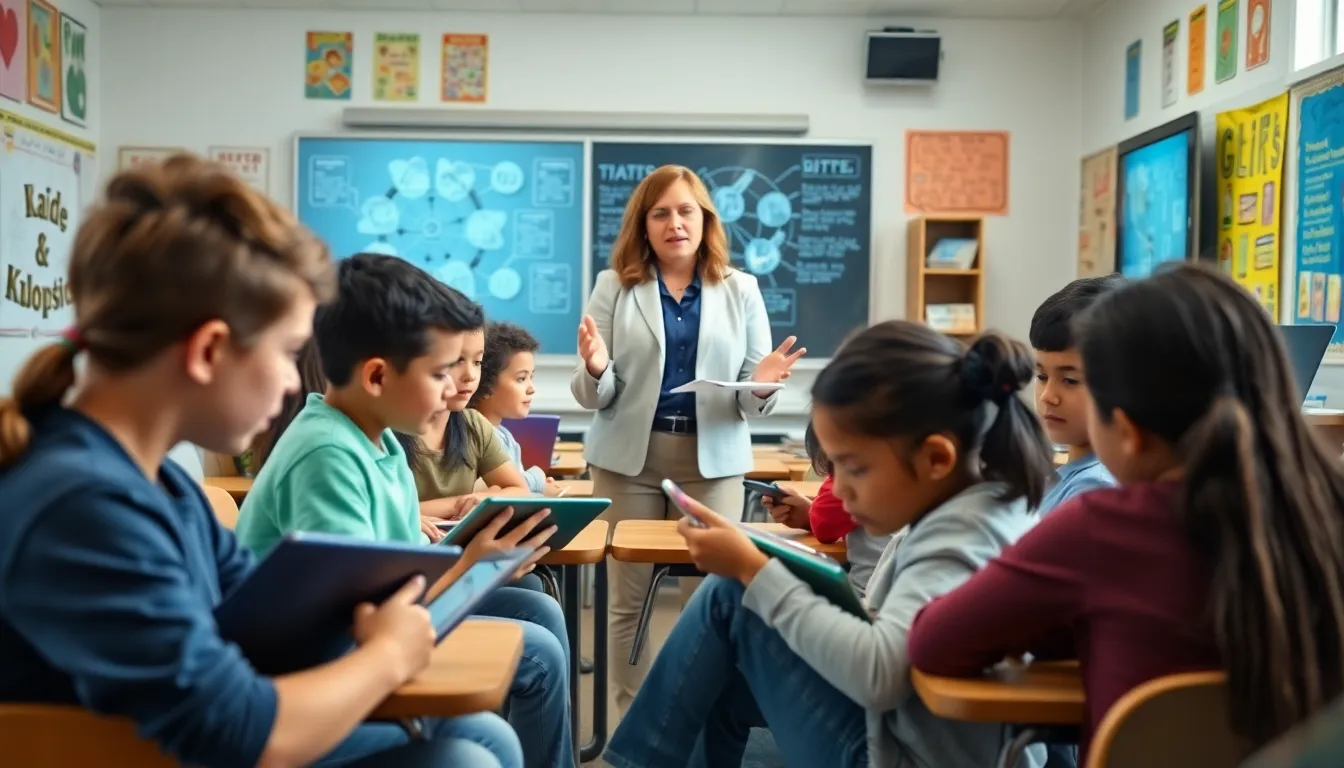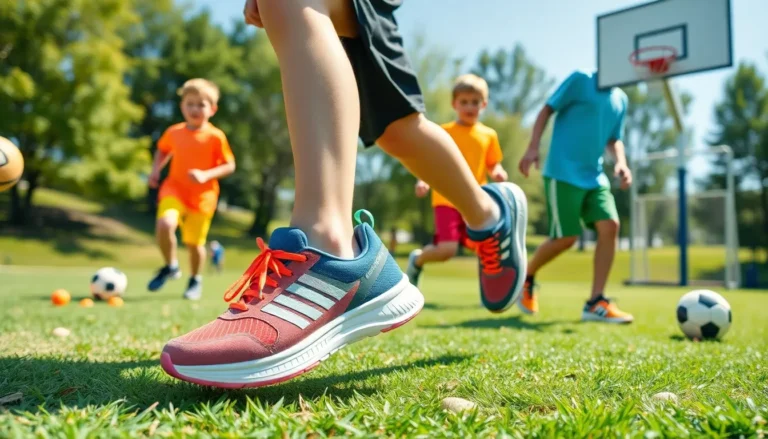Imagine a world where students thrive in classrooms filled with the latest tech, passionate teachers, and abundant resources. Sounds dreamy, right? Yet, today’s education system faces a myriad of challenges that would make even the most optimistic educator scratch their heads in frustration. From funding issues that resemble a game of musical chairs to standardized tests that suck the joy out of learning, the hurdles seem endless. Buckle up as we jump into the problems in education today, exploring the realities faced by students, teachers, and parents alike.
Table of Contents
ToggleFunding Disparities in Education

Funding for public education can sometimes seem like a game of chance, certain districts hit the jackpot while others remain stuck at the bottom. In America, there are glaring inequalities depending on zip codes. Wealthier districts often have access to ample resources, while underfunded schools struggle to provide even basic materials.
This unequal distribution of funds results in larger class sizes, outdated textbooks, and fewer extracurricular activities. Specialized programs in music or arts get shelved due to lack of financial support. It’s no wonder students in less affluent areas face steep uphill battles when they enter the workforce or higher education, not only are they competing against peers from better-funded schools, they often lack the foundational skills necessary to succeed.
Unfortunately, governmental budgets are constrained, and educational funding often falls victim to economic downturns and political agendas. This creates a vicious cycle where underfunded schools struggle each year, perpetuating educational inequalities that affect generations.
Impact of Standardized Testing
Standardized testing has become the go-to measurement of student success, but the reality is far more complicated. On one hand, these assessments provide a snapshot of student performance and hold schools accountable. On the other hand, they often do more harm than good.
Students are trained to pass tests rather than truly learn. Some teachers resort to teaching to the test, which can stifle creativity and critical thinking. Isn’t it better for kids to explore their curiosity rather than gear up for test day like it’s the Super Bowl?
Also, these tests can disproportionately impact marginalized groups, who may not have the same access to resources or test preparation. Schools that perform poorly can face penalties, further exacerbating the challenges of less fortunate districts. Eventually, while standardized tests aim to foster accountability, they can inadvertently hinder the very education they seek to improve.
Teacher Shortages and Retention Issues
Imagine being a teacher who pours their heart and soul into educating students, only to find that the job is not sustainable. Teacher shortages are at crisis levels, and this leads to an assortment of problems. Many educators are leaving the profession due to low pay, lack of support, and increasing stress levels.
A revolving door in the workforce means that students often find themselves with substitute teachers or less experienced educators. This inconsistency can hinder their overall learning experience. It’s disheartening, dedicated professionals want to inspire young minds but often face systemic barriers that make their job unenjoyable.
Also, having well-trained teachers in front of the classroom is crucial to fostering a strong educational environment. But, inadequate compensation and high workloads contribute to burnout, leading to an alarming retention crisis that schools struggle to address.
Access to Technology and Resources
In an age defined by digital connectivity, it’s shocking to realize that not all students have equal access to technology. Many rely on outdated computers or even lack internet access entirely. This digital divide can severely restrict a student’s ability to research, complete assignments, or connect with peers and educators online.
While some schools boast cutting-edge technology, others still struggle to provide basic learning tools. Without consistent access to technology, students in under-resourced schools fall further behind their peers, reinforcing educational inequalities that can persist throughout their lives.
Besides, infrequent or nonexistent access to technology can expand into other resources, everything from current learning materials to extracurricular activities. Schools need investment and innovation to ensure that every student can take advantage of today’s educational opportunities.
Mental Health and Well-Being of Students
In a world where mental health is finally gaining more attention, the statistics alarmingly indicate that students are struggling. From anxiety to depression, young people today face myriad pressures, from academic expectations to social dynamics. Schools are often ill-equipped to address these challenges.
Students who deal with mental health issues can find it difficult to concentrate, participate in class, or maintain friendships. But, when mental health support services are available, they can lead to remarkable improvements and academic success.
The integration of mental health resources by schools can bridge the gap, providing counseling, promoting wellness programs, and fostering environments where students feel safe expressing their feelings. Recognizing the importance of mental health is essential, yet many schools still lack adequate support.
Inequality in Educational Opportunities
When it comes to education, the playing field should ideally be level, but unfortunately, it remains uneven. Disparities exist in terms of advanced courses, support services, and even basic resources. Students from marginalized communities frequently lack access to gifted programs, and this discrepancy perpetuates a cycle of inequality.
Local funding formulas emphasize property taxes, leading to vast differences in resources provided to schools. Programs designed to help all students succeed can often fall short, as socio-economic status influences participation in clubs, sports, and even college preparedness courses.
Every student deserves an equal shot at success, yet systemic inequalities regularly thwart opportunities for many. Schools must address these disparities to foster a more inclusive education landscape.
The Role of Parents and Community Engagement
Education isn’t just the responsibility of schools: parents and community engagement play a fundamental role in a child’s learning experience. When parents are involved, student outcomes improve significantly, this isn’t magic: it’s science. But the challenge is to foster that engagement, especially in under-resourced communities.
Programs designed to bridge the gap between educators and families can lead to remarkable benefits. From workshops to open house events, schools that encourage parental involvement often see better student attendance and performance. Nevertheless, many parents face barriers to engagement, be it economic, cultural, or learning-related, making it crucial for schools to find creative solutions to enhance community interaction.
Besides, community organizations can offer invaluable resources, tutoring, and mentorship programs, creating networks of support that bolster educational opportunities.





